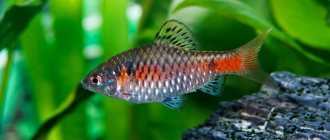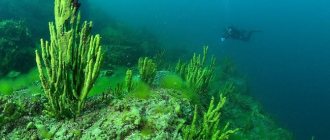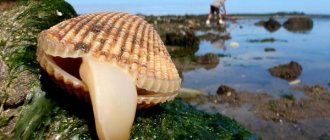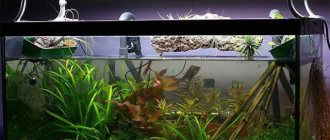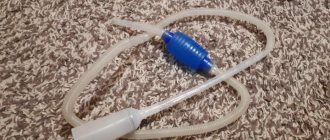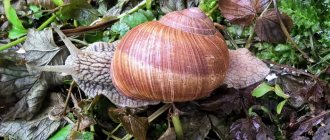All living things need food. For some, the source of energy is sunlight, others use chemical reactions for this purpose, and still others receive nutrition from the first two groups. The first group includes all plants, the second group includes nitrifying bacteria, the third group includes all animals, including you and me.
How do organisms obtain energy from inorganic substances?
All green plants and many bacteria can themselves produce nutrient organic substances from inorganic substances (water, carbon dioxide, etc.). This group of living organisms is called autotrophs (from Latin “self-feeding”), or producers, and is the first link in the food chain.
Organisms that obtain energy from sunlight through the process of photosynthesis are called phototrophs. Nitrifying bacteria belong to the group of microorganisms that use the energy of chemical oxidation reactions as a food source. Such organisms are called chemotrophs.
Nitrifying bacteria (chemotrophs) do not digest organic matter contained in soil or water. On the contrary, they synthesize building material to create a living cell.
Substances obtained by nitrifying bacteria from soil and water are oxidized, and the resulting energy is used to synthesize complex organic molecules from water and carbon dioxide. This is the so-called process of chemosynthesis.
Chemosynthetic organisms, like all autotrophs, do without the supply of necessary nutrients from outside; they produce them independently. However, unlike green plants, nitrifying bacteria do not even need sunlight to feed.
There are organisms that use electricity to produce energy. Recently, a group of Japanese scientists published the results of a study of bacteria living near deep-sea hot springs. When the water flow rubs against the stone protrusions at the bottom, a weak charge of electricity is formed, which the studied bacteria used to obtain food.
Autotrophs and heterotrophs
Bacteria, like other living organisms, have two main methods of nutrition. Some bacteria obtain energy by consuming organic molecules. These organisms are heterotrophs, like animals and fungi that feed on other organisms. There are also bacteria that produce their own food. They convert light energy (phototrophs) or inorganic chemical substances (chemotrophs) into useful energy necessary for their existence. These bacteria are autotrophs, like plants and algae.
What do plants need to feed?
Nitrifying bacteria living in the soil use oxidation to decompose ammonia, which is formed from the decay of organic matter, into nitrous acid. Other bacteria oxidize (add oxygen and release energy) nitrous acid to nitric acid. In turn, both of these acids, with the help of minerals from the soil, create salts and phosphates for plant nutrition.
In addition, nitrogen contained in the environment is necessary for nutrition. However, plants are not able to obtain it on their own. Nitrogen-fixing bacteria come to the rescue. They absorb nitrogen in the air and convert it into a form accessible to vegetation - ammonium compounds. Nitrogen-fixing nitrifying bacteria can live freely in the soil (Azotobacter, Clostridium) or be in symbiosis with higher plants (nodules).
Bacteria that feed on inorganic compounds
Some autotrophic bacteria, called chemotrophs, synthesize food from inorganic compounds through chemosynthesis. Carbon dioxide is usually the only source of cellular carbon for chemosynthetic bacteria. These autotrophic microorganisms use hydrogen sulfide, ammonia, or hydrogen gas to reduce carbon to essential carbohydrates. Nitrifying bacteria, which oxidize ammonia to form nitrites and nitrates, are an example of bacteria that use an autotrophic mode of nutrition, or more specifically, chemoautotrophic nutrition.
Next link in the food chain
A large group of living organisms do not know how to independently synthesize the necessary organic compounds from inorganic ones. Such organisms are called heterotrophs, or consumers (from the Latin “to consume”). They receive organic substances from the outside, and then rearrange the molecules for their use, that is, they directly depend on the products of photosynthesis. Consumers include fungi, animals, many bacteria, parasites and carnivorous plants.
For example, when eating food of plant origin, we directly use a product synthesized using the energy of sunlight. With animal food we receive ready-made organic substances that were obtained by animals from plants.
However, heterotrophs cannot completely decompose the resulting organic food. There are always waste products left, which, in turn, are dealt with by a separate group of microorganisms.
Nitrogen cycle in an aquarium
Tekhi
“Yur, somehow it’s so simple for you when you talk about the nitrogen cycle - the fish ate, the organic matter dissolved, the nitrifying bacteria processed it into nitrate, the plants ate the nitrates, we removed the remains with a replacement...
Yu.V.
- Well, you asked me to tell you “on your fingers” how you seem to be a complete beginner, so I told it in a simpler way.


